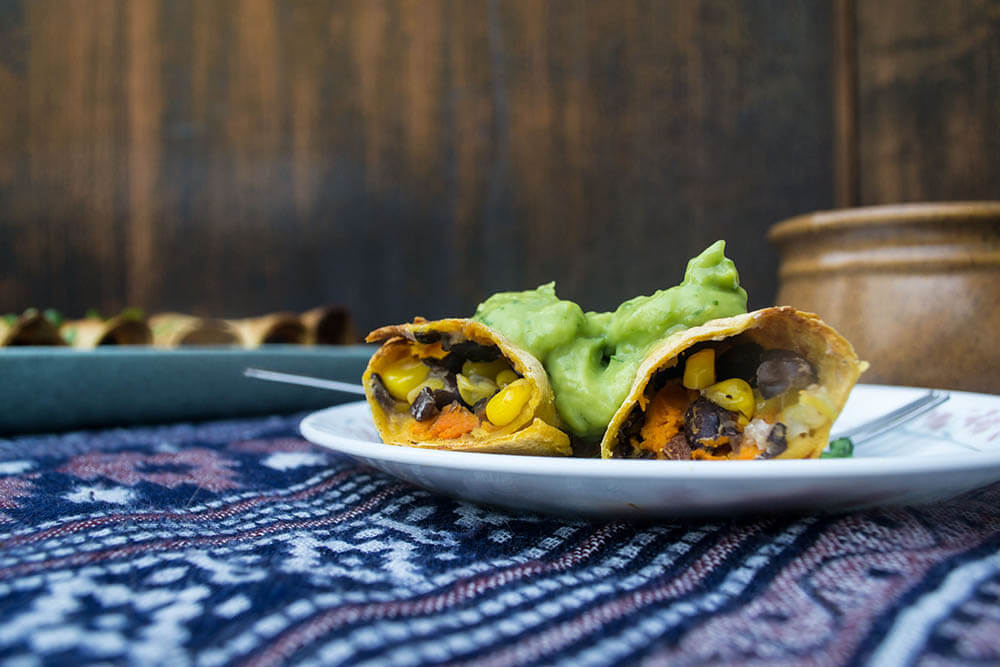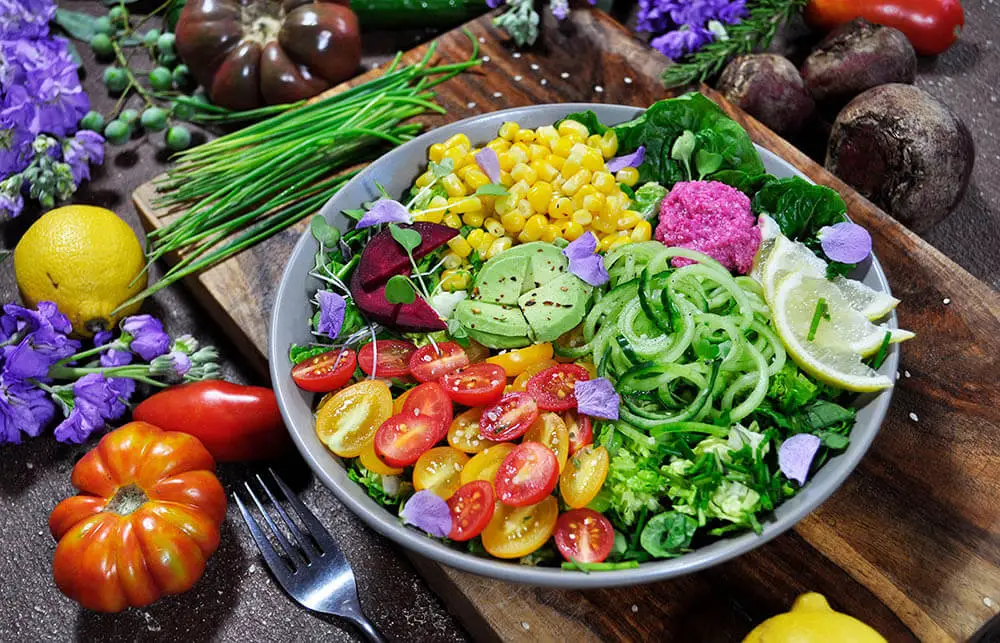As more people turn to plant-based eating, whether for the environment, animal welfare, or health reasons, it’s important to have a guide on how to make the transition to this lifestyle. In this ultimate guide, we will explore tips, tricks, and delicious recipes that will not only make your plant-based journey easy but enjoyable too.
What is a Plant-Based Diet?
The first step to adopting a plant-based diet is understanding what it is. A plant-based diet is a way of eating that focuses on whole, minimally processed foods from plant sources. This means that meat, dairy, and other animal products are excluded or consumed in small amounts. Some people may also include fish, eggs, or dairy products in their plant-based diet.
Why Plant-Based Eating is Important
Plant-based eating has been associated with a lower risk of chronic diseases such as heart disease, diabetes, and certain types of cancer. It also has a lower carbon footprint and is more sustainable in the long run. Plus, plant-based diets can be quite versatile and delicious, even for those who are sceptical!
The Health Benefits of a Plant-Based Diet
A plant-based diet can help reduce inflammation in the body, lower cholesterol levels, and improve gut health. It’s also a great way to get all the necessary nutrients your body needs without relying on animal-based sources. Incorporating plant-based eating into your life can also improve your energy levels and boost your overall health and well-being.
Plant-based eating has become an increasingly popular lifestyle choice among individuals looking to live a healthier lifestyle. However, the benefits of plant-based eating extend beyond just personal health. Adopting a plant-based diet can also have a significant positive impact on the environment.
One of the major environmental benefits of plant-based eating is a reduced carbon footprint. The production of animal products, such as meat and dairy, is a significant contributor to greenhouse gas emissions. In fact, it is estimated that animal agriculture contributes to more greenhouse gas emissions than the entire transportation sector combined.
Overall, the environmental benefits of plant-based eating are numerous and compelling. By adopting plant-based eating habits, individuals can significantly reduce their carbon footprint, help conserve water resources, and protect biodiversity. It’s a win-win for both personal health and the health of the planet.
- Lower risk of heart disease, diabetes, and some cancers
- Improved digestion and gut health
- Increased energy and better sleep
- Weight loss and maintenance
- Reduced inflammation
Plant-based eating and its impact on the environment
Plant-based eating is not only beneficial for one’s health but also has a positive impact on the environment. Animal agriculture is one of the leading causes of deforestation, greenhouse gas emissions, water pollution, and habitat destruction. A plant-based diet reduces the demand for meat and other animal products, leading to a more sustainable future.
Moreover, plant-based eating helps reduce food waste since plant-based meals are typically cheaper and last longer. Most of the food waste comes from animal products, as they need to be kept at specific temperatures and conditions. A plant-based diet also ensures that fewer pesticides and fertilisers are released into the environment, leading to a cleaner and healthier planet.
Related: 15 Basic Cooking Methods You Must Know: Tips and Tricks
Small changes in our food choices can have a significant impact on the environment. Plant-based eating is a simple yet powerful way to lower our carbon footprint and positively affect the world’s ecosystem. So, let’s make a choice that not only benefits us but also the planet we live on.
Tips for Transitioning to a Plant-Based Diet
Transitioning to a plant-based diet can be challenging, but it doesn’t have to be. Here are some tips to make the transition easier:
- Start Slowly: Begin by swapping out one meal per day with a plant-based meal. Gradually increase the number of plant-based meals as you become more comfortable.
- Experiment with New Foods: Try new fruits, vegetables, and grains to find new favourites.
- Plan Your Meals: Meal planning can make plant-based eating more manageable. Plan your meals ahead of time and make a grocery list.
- Get Creative with Cooking: There are countless plant-based recipes available online, and experimenting with different recipes can make the transition more exciting.
Recipe: Black Bean Sweet Potato Tacos

These tacos are delicious and satisfying, making them a perfect addition to your plant-based diet.
Ingredients:
- 1 medium sweet potato, cubed
- 1 can black beans, drained and rinsed
- 1/2 tsp cumin – 1/2 tsp chilli powder
- Salt to taste
- 4 small tortillas
- 1 avocado, sliced
- Fresh cilantro
Instructions:
- Preheat the oven to 400°F.
- Place the cubed sweet potato in a baking tray and roast until tender, around 20-25 minutes.
- Combine the black beans, cumin, chilli powder, and salt in a pan and cook until heated through, around 5-7 minutes.
- Warm up the tortillas in the oven.
- Assemble the tacos by placing the sweet potato and black beans on the tortillas. Top it with sliced avocado and fresh cilantro.
Tips for Incorporating More Plants into Your Diet
- Start small by incorporating one plant-based meal into your diet per day.
- Experiment with different cuisines and flavours to keep your meals interesting.
- Explore alternative protein sources such as tofu, tempeh, and legumes.
- Make staples like brown rice, quinoa, and roasted veggies in large batches, so you always have something to grab.
- Find plant-based substitutes for meat and dairy products, such as vegan cheese, plant-based milk, and veggie burgers.
Recipe: Vegan Mac and Cheese

Who says you can’t have mac and cheese on a plant-based diet?
Ingredients: –
- 2 cups elbow macaroni
- 1 cup raw cashews, soaked in water for 4 hours or overnight
- 1/4 cup nutritional yeast
- 2 cloves garlic
- 1/2 tsp turmeric
- 1 1/2 cups of plant-based milk of your choice
- Salt and pepper to taste
Instructions:
- Cook the macaroni according to the package instructions.
- In a blender, blend the soaked cashews, nutritional yeast, garlic, turmeric, and plant-based milk until smooth and creamy.
- Heat up the sauce mixture in a pan for a few minutes until it thickens.
- Combine the sauce with the cooked macaroni and mix well.
- Serve hot and enjoy your cheesy, plant-based meal!
Conclusion
Incorporating more plant-based foods into your diet doesn’t have to be a daunting task. With these tips, tricks, and recipes, you can start your journey to a healthier and more sustainable lifestyle. Remember to take it slow, experiment with different foods, and most importantly, have fun in the kitchen!
I hope you guys liked this article. Stay tuned with us right here at Booxoul for the best in the field of entertainment, lifestyle, tech and gadgets, food, fun, finance, fashion, as well as all things bookish.
Ciao peeps!
This post is part of the #BlogchatterA2Z challenge





